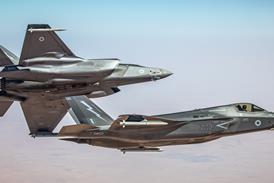Few countries have improved their aviation infrastructure in as short a time as China has. In recent years, new airports have sprung up across the country, and a programme to build even more facilities and improve present ones is continuing at a rapid pace.
Last year saw a flurry of activity, including the opening of a new terminal building at Beijing and the inauguration of an all-new gateway for Shanghai. This activity has continued this year with Beijing airport securing a Hong Kong stock exchange listing and preparation work continuing at Guangzhou ahead of the start of full construction of a new airport.
At Beijing, the country's capital, a new $1 billion terminal at congested Capital International went into full use on 1 November last year, two months after a formal opening on China's 50th national day. The new H-shaped terminal building has been designed to deal with 35 million passengers a year, having, as China's busiest airport, handled more than 18 million last year.
Not to be outdone, Shanghai, the country's largest city, opened its new $1.6 billion Pudong International Airport last year, making it the first in the country to have two civilian airports.
Pudong's first phasePudong's first phase includes a 4,000m (13,000ft)-long runway, an 800,000m² (8,600,000ft²) parking area, able to handle 71 aircraft at a time, and a 278,000m² terminal building. It can now handle 126,000 flights, 20 million passengers and 750,000t of cargo a year.
Located 30km south-east of Shanghai's business centre, the airport is in a special development area. While it has officially taken over from Hongqiao International as the city's main gateway, the older facility continues to handle domestic and some international flights.
Meanwhile, the southern city of Guangzhou is working on a new airport of its own. Guangzhou New International Airport will open in just over two years to replace Baiyun, China's third busiest airport after Beijing and Shanghai.
Full construction is set to begin late this year. Located about 30km from Guangzhou's main business centre, the airport will have an annual handling capacity of 80 million passengers and 2,500,000t of cargo. It will also have two runways, a 300,000m² passenger terminal, a cargo terminal, attached hotel and train connection to the city centre.
To help cover the estimated $2.4 billion cost of constructing the airport and related infrastructure, management company Guangzhou Baiyun plans a domestic listing on the Shenzhen Stock Exchange in a move that will make it China's second listed airport operator. Early this year, Beijing Capital Airport was China's first to go public, becoming only the third publicly traded airport operator in the Asia-Pacific region, with a listing in Hong Kong.
It came after an initial public offering that raised $320 million and which saw Aéroports de Paris becoming a shareholder. Beijing Capital made available shares equivalent to 35% of the company and funds raised are being used to reduce the airport's debt and help pay for renovation of its old passenger terminal.
While improvement works continue at more of the country's airports, and other operators may seek stock exchange listings of their own, the Civil Aviation Administration of China is continuing to upgrade the country's air traffic management systems. Work is also being carried out to improve health standards at airports. Shenzhen airport near Hong Kong became the first facility in China to pass a full health inspection by the World Health Organisation (WHO) earlier this year.
The WHO certification, which followed $3 million in improvements, meant Shenzhen could be officially called an "international sanitary airport" by the Chinese Government. Asa result, gateway airports at Beijing and Shanghai have been chosen as next in line for sanitary upgrading.
China's airport upgrades carried out since the last Airshow China in Zhuhai two years ago came amid a downturn in the air transport sector, which resulted from economic woes that hit the Asia-Pacific region in mid-1997.
While it was a trying period for China's more than 30 airlines, the improvements at major airports could not have come at a better time. With the economic downturn behind it, the country is well positioned to handle growth.
Source: Flight International























